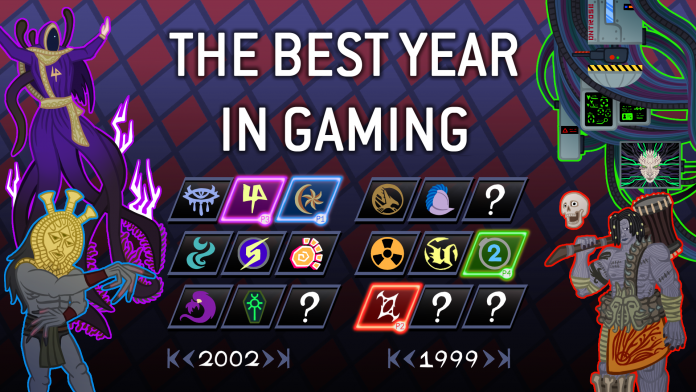Last year’s stacked lineup of games for the Game Awards had us thinking: What was the best year in gaming? As part of our series on determining gaming’s best year, we’re putting together an article on each year, charting the major releases and developments of the year, and talking about both their impact and what made them great.

The Year: 1977
1977 is one of several transition years we’ll see over the course of this project, with 1976 largely being another, caught between one set of major milestones – the releases of Pong and Magavox’s home console on the video games front and the release of Dungeons & Dragons for tabletop games – and another major set in 1978, though the release of the Atari VCS later in the year was a major catalyst for that. The arcade business in 1977 was booming but the world would have to wait another year for something truly transformative.
In June 1977 Apple released its Apple II computer, replacing the Apple I from a year prior. This one was also designed by Steve Wozniak and was Apple’s first foray into consumer electronics intended for home use. The Apple II’s big selling point was the ability to display color graphics, leading to a rainbow redesign of the Apple logo which would stick around for a couple of decades. The company would go on to iterate on the Apple II over the next 15 years, and the Apple II would become one of the most important platforms for PC gaming of its era. The Apple II had an 8-bit microprocessor and debuted with a price tag of $1,298 (about $6,600 in 2024). The new platform supported game paddles and sound, something Wozniak added after working on Breakout for Atari in 1976. Wozniak would port the game to the Apple II, this time programming the game in Integer BASIC rather than through custom hardware. The release of the Apple II was flanked by the Commodore PET release in January and Tandy’s TRS-80 in August, both of which would act as early platforms for home PC gaming.
As a site which spends a lot of time talking about Warhammer, we have to mention the second issue of 2000 AD, which was the first to feature the character Judge Dredd. With Judge Dredd, John Wagner and Carlos Ezquerra would present a brutal, authoritarian future, with populations centered in massive mega-cities home to giant habitation towers known as City Blocks. In this world judges acted as judge, jury, and executioner. Judge Dredd was known for its over-the-top violence and grim demeanor, often satirizing US and British culture. Dredd went on to be a wildly popular character, receiving his own comic book and as of this writing, two movie adaptations. The work is considered one of the earliest cyberpunk works and was a massive inspiration/influence on the grimdark universe of Warhammer 40,000.

The Atari 2600 Releases
Originally developed and released as the Atari Video Computer System (and renamed in 1982), the Atari 2600 was a major step forward for home gaming, popularizing microprocessor-based hardware which allowed games to be stored on ROM cartridges – meaning that a console could be used to play multiple games. This was both more profitable for the manufacturer and a better deal for the consumer, who wouldn’t have to buy expensive new hardware in order to get a different experience. The Atari VCS offered full-color graphics and was packed with the two-player tank game Combat at launch, retailing for $199, or an eye-watering $1,050 in 2024 dollars, while games cost around $20, or more than $100 today.
The Atari VCS launched with 8 games in its original lineup, most of which were based on arcade games they’d developed: Air-Sea Battle, Basic Math, Blackjack, Combat, Indy 500, Star Ship, Street Racer, Surround, and Video Olympics.
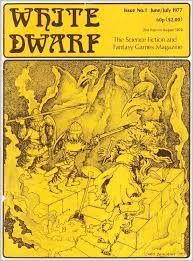
The First Issue of White Dwarf
The first issue of White Dwarf magazine was published in the summer of 1977 as “The Science Fiction and Fantasy Games Magazine.” A far cry from today’s Games Workshop-centric publication, the original White Dwarf focused heavily on tabletop RPGs but also featured reviews of board games, wargames, and other genre-specific media. They also published custom scenarios and rules content, book reviews, and for most of the eighties would write about Dungeons & Dragons and Traveller. The original magazine is an interesting time capsule, full of more detailed articles and thoughts befitting its origins as a converted newsletter (the first issue included an article on “fixing” the combat and magic systems in Dungeons & Dragons). White Dwarf served as an interest marker for the growing importance of tabletop games as an independent publication (at the time) to offer critiques and reviews of new products.
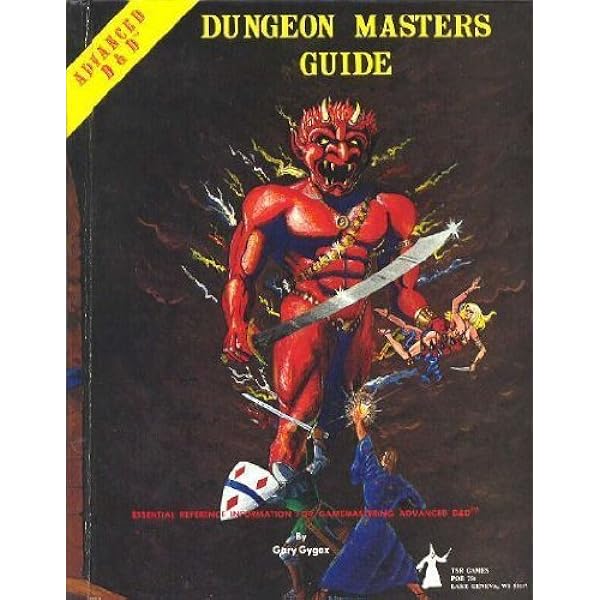
Advanced Dungeons & Dragons
TSR would release an updated version of their pioneering tabletop RPG in 1977, replacing their white box with three new core rulebooks which would come to define the game: the Player’s Handbook, the Monster Manual, and the Dungeon Master’s Guide. The Advanced version of the game folded in many rules and updates from supplements and magazine articles, such as classes like the paladin and ranger, and added the game’s more famous nine-category alignment system. Advanced Dungeons & Dragons would set the tone for the game and hold it down until its 2nd edition release more than a decade later.
Star Wars
Stop me if you’ve heard this one: A long time ago in a galaxy far, far away… The biggest movie of 1977 was George Lucas’ Star Wars, a sci-fi fantasy film in which a whiny farmboy is radicalized and pressed into an act of intergalactic terrorism by a group of plucky rebels and a space wizard with a laser sword. The film owes much of its inspiration to the Flash Gordon serials of Lucas’ youth as well as the films of Akira Kurosowa and WW2 dogfight movies like The Dam Busters. A stark contrast to the harder sci-fi films which had characterized 70s cinema following 2001: A Space Odyssey, Star Wars quickly became a blockbuster hit, becoming one of the highest-grossing films of all time. The real kicker is, because 20th Century Fox did not believe the movie would amount to much, they let Lucas keep the film’s licensing and merchandising rights to himself in exchange for passing up an additional $500,000 directing fee. This is likely one of the dumbest moves a movie studio has ever made and Lucas would go on to make billions off the tidal wave of toys, games, and tie-ins for the Star Wars franchise.
It’s difficult to overstate the impact of Star Wars on popular culture and in particular, nerd and gaming culture. The movie and its sequels popularized the sci-fi fantasy genre and led to some of the most beloved video games and tabletop games of all time.
https://www.hollywoodreporter.com/news/general-news/george-lucas-star-wars-288513/
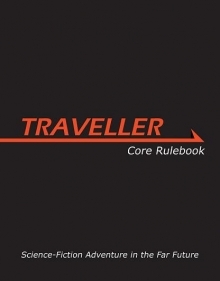
Traveller
Dungeons & Dragons had kicked off an explosion of interest in tabletop role-playing, but its roots were firmly planted in historical wargaming and Tolkienesque fantasy, leading to many imitators working within that same genre. In 1977 Games Designers’ Workshop brought something new to the formula with the publication of Traveller, a sci-fi tabletop RPG. Traveller uses a 2D6 game system – you’re usually trying to roll an 8+ to accomplish things – which does away with the levels of D&D in favor of a skill-based approach and changes up the basic characteristics, keeping Strength, Dexterity, and Intelligence, but swapping in Endurance, Education, and Social Standing for Constitution, Wisdom, and Charisma. In a fun twist, Traveller assigns hexadecimal values to these characteristics, so they effectively go from 0 to F (15), and they’re generated by rolling 2d6. From there you pick a lifepath to determine more of your traits and skills, then set off exploring the galaxy and having hard-sci-fi adventures.
Traveller presented a sharp contrast to other tabletop RPGs of its day in that it very much felt like its own game and not just a reworking/reimagining of Dungeons & Dragons. The game was well received after its first release and would bounce around between publishers and see a host of printings in the decades following. It’s considered one of the all-time greats and is to sci-fi roleplaying what D&D was to fantasy roleplaying and would join 1978’s RuneQuest as one of the “big three” RPGs. Traveller is currently being published by Mongoose Publishing.

Cosmic Encounter
Published by Eon Productions in 1977, Cosmic Encounter is another sci-fi game about conquering the galaxy. Up to six players could take the role of an alien power attempting to take control of the universe through a mix of diplomacy, trade, and combat. Each of the game’s alien races has its own unique abilities and powers, which may affect the way the faction plays and even its victory conditions. The game would later see a host of expansions to add more alien races and mechanics. Cosmic Encounter was widely praised following its release and has seen a dozen editions and reprints since. It’s regarded as one of the best board games of all time.

Zork
In the years following the release of Dungeons & Dragons the programmers playing the game would look for ways to translate the game’s tabletop experience to video games. Eventually D&D would make its way to Japan and Japanese developers would attempt to do the same, spawning the entire genre of JRPGs. In 1977 Tim Anderson, Marc Blank, Bruce Daniels, and Dave Lebling created their attempt, Zork. Zork is a text-based adventure game where players navigate a massive underground maze filled with monsters, traps, puzzles, and grues. Zork was the game where pitch black areas hid the dangerous monster known as a grue: players who did not leave immediately or light a torch would be immediately eaten. The game’s nonlinear story and more complex input system (commands like “tie ITEM to OBJECT” were possible) made it the most well-known adventure game of the early era. When the team later ported Zork to other home computers it became a sales hit and perennial bestseller. Colossal Cave Adventure might have been the first text adventure game, but Zork made the genre popular.
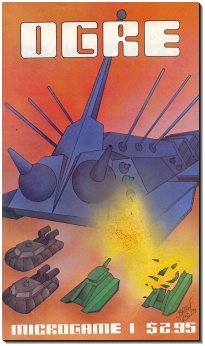
OGRE
Steve Jackson’s first game, OGRE is a science fiction board game in which players take on the roles of generals in the year 2085, duking it out with hovertanks, infantry, and nukes on a hex grid. The game’s big hook is that one player gets all the nukes, infantry, and tanks and the other player gets only a single unit – the OGRE, a massive robot tank powerful enough to take on an entire army. The game was critically praised on its release and has been republished many times in the last four decades. When Steve Jackson left Metagaming to found his own company, he took the OGRE rights with him, eventually publishing a sequel.
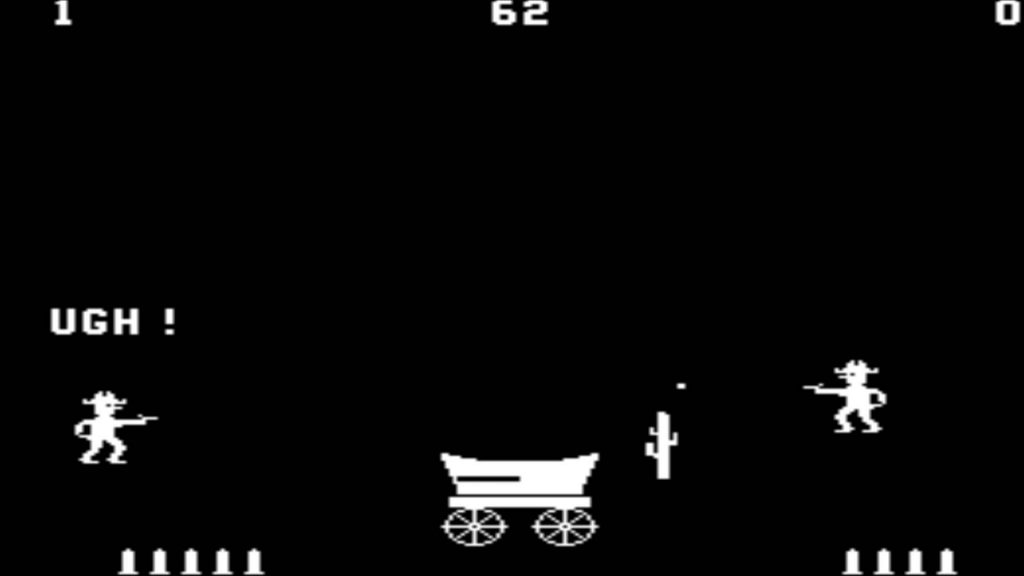
Boot Hill
Midway released Boot Hill, the sequel to its arcade hit Gun Fight in 1977. The game featured a colorful background overlay but with refined visuals and controls and the ability to play against a computer foe, giving players one of the first real AI-based challenges in an arcade game.
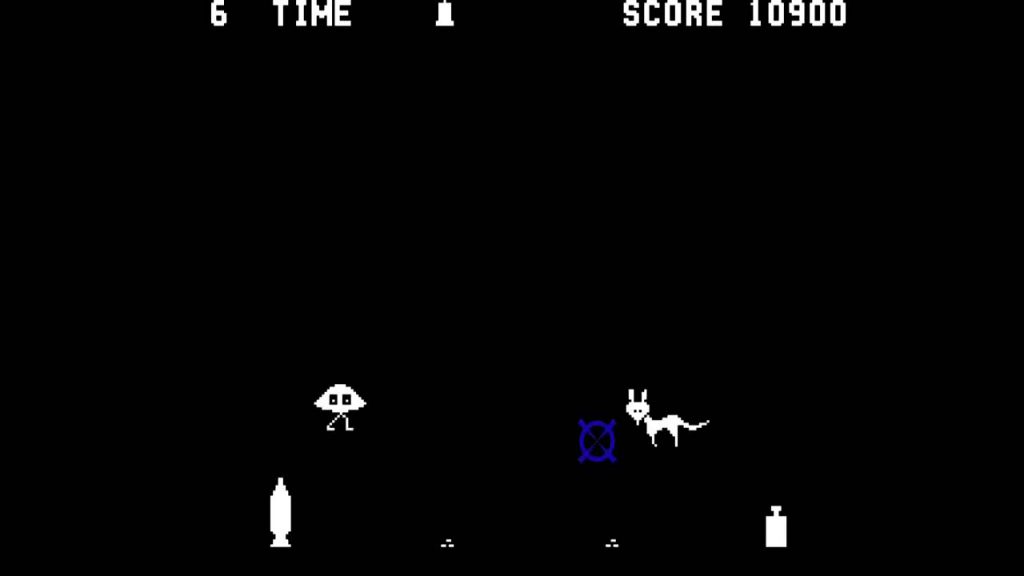
Desert Gun
Target shooters began to take hold in 1977 and the most popular of these that year was Midway’s Desert Gun, a shooter in which players use a mounted plastic shotgun accessory to shoot wild west-themed targets on the screen like birds and bottles.

Super Bug
Atari’s Super Bug was another true innovator in the top-down racing game genre, this time featuring something which had never been done before: A scrolling screen with a dedicated map. Players drive the titular yellow VW bug around a racetrack covered with obstacles like oil slicks and must get to a checkpoint before time runs out. The scrolling effect of the game really stands out when compared to other racing games of the day, which tended to opt for simulated scrolling effects to suggest motion rather than having an actual map in the game which players could learn and improve on.
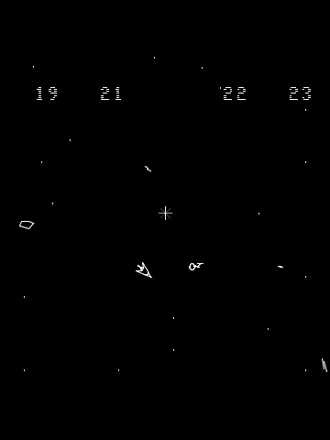
Space Wars
A game much older than its arcade cabinet, Space Wars was in many ways a port of what is commonly regarded as the very first game, originally played on university mainframe computers in the 1960s. In Space War players take control of a pair of spaceships and must shoot each other while avoiding a star in the middle of the map. It’s a simple game with simple graphics but was fun enough to still be relevant more than a decade after inventing the entire genre.
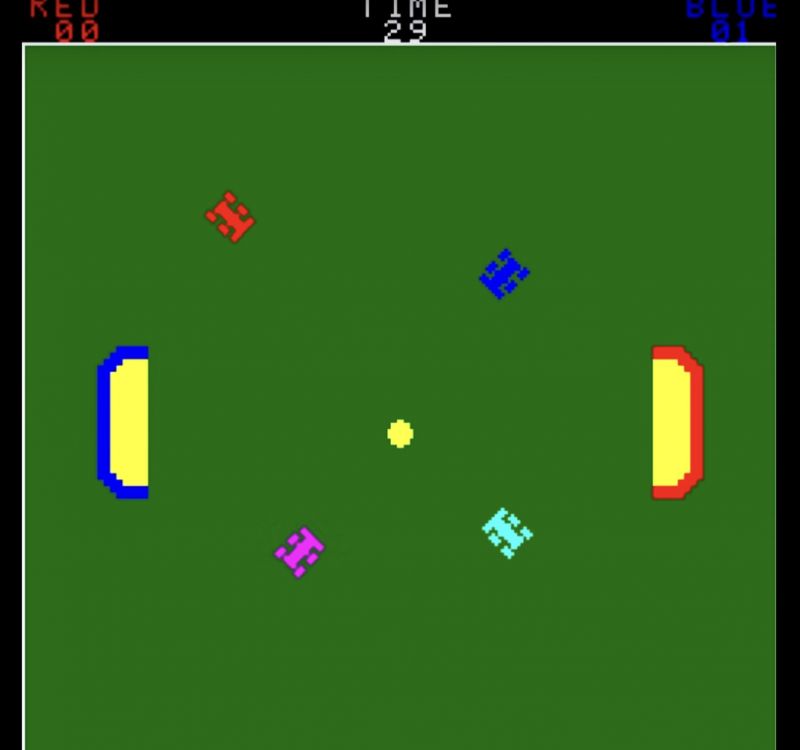
Car Polo
Exidy followed up its controversial Death Race title from 1976 with this evolved form of the game, which traded out civilians to be squashed for a ball players could nudge into a net with their cars. It was basically the seventies version of Rocket League and it was just as fun then as it is now. Car Polo was one of the first full-color arcade games, giving players four different colored cars on a green background and featured a custom four-player stand-up cabinet with steering wheels for controls.
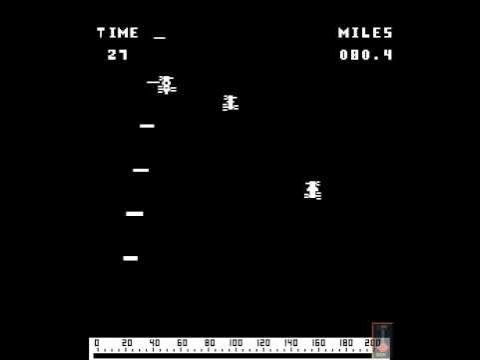
Laguna Racer
Midway’s Laguna Racer is a pseudo-3d, top-down arcade racer which brought a number of innovations to the genre, in part thanks to its use of an intel 8080 microprocessor. The game included both gearshift controls and collision detection, with crash animations for when players made contact with another racer.
Why It Was the Best Year in Gaming
1977 is interesting because despite being a bit of a transition year for video games, it offers a very strong case when it comes to tabletop games. Traveller, Cosmic Encounter, and OGRE are all-timer entries in the genre, and it’s with good reason that all are still being published today. It was also a big year for sci-fi board games, as several other notable but less timeless offerings such as Space Marines, Rail Baron, and Space Quest rounded out the slate. Pente would give the US its own version of the classic Chinese game Go and Rail Baron would be an early pioneer of what would become a long line of rail-based board games in the United States. And on the fantasy side of things, Advanced Dungeons & Dragons was a huge deal for the game, giving us something much more in line with the game’s modern look and feel.
On the video game side, Zork was the biggest release of the year, really popularizing the text adventure game genre and doing so in such a distinctive way that “you are likely to be eaten by a grue” would become a meme decades later. The game is still perfectly playable today, if a bit stiff, and has a lot of depth and complexity, with room for subsequent playthroughs to feel very different depending on how you approach them. Atari’s VCS would be instrumental to the video game boom of the following years and would be renamed to the 2600 in 1982 after the release of the Atari 5200. Of those launch titles, Combat is alright, but the console wouldn’t see its real first killer app until a year later. Desert Gun and Boot Hill continued to push things forward for arcade game technology, though 1978 is really when things would really pick up and the golden age of arcade games would begin.
This article is part of a larger series on the best year in gaming. For more years, click this link. Have any questions or feedback? Drop us a note in the comments below or email us at contact@goonhammer.com.
